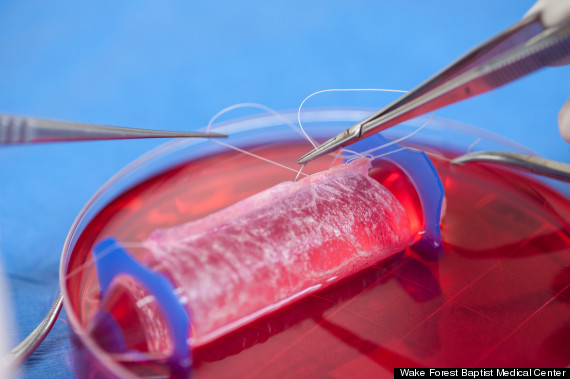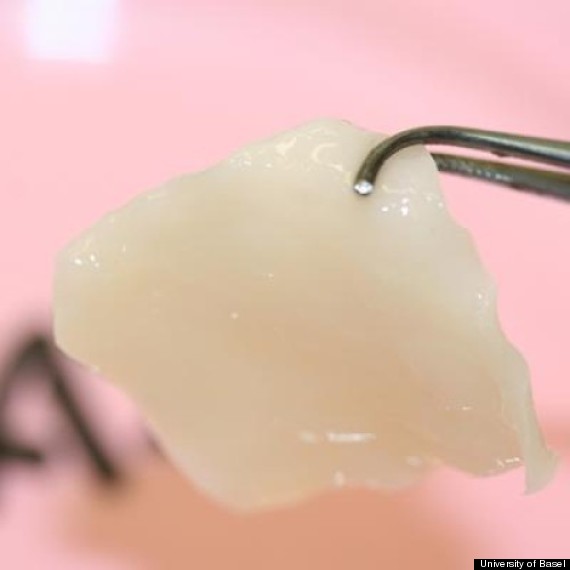
Modern medicine is amazing. Research is in development to help people with so-far-unfixable health problems (such as regenerating nerves in people with hearing loss, or helping to repair nerve damage among those who have experienced spinal cord injury). While a lot of research is still in its infancy and isn't quite ready for primetime, we can't help but marvel at the advances that are improving lives. If you need proof of just how far we've come with medical innovation, we've got some examples:
Four teenage girls born with no, or underdeveloped, vaginas have received new vaginal organs engineered from their own cells.

The patients had a condition called Mayer-Rokitansky-Küster-Hauser syndrome -- which means they had either no, or underdeveloped, vaginas. But researchers from Wake Forest Baptist Medical Center's Institute for Regenerative Medicine found a way to use these girls' own muscle and epithelial cells to create "scaffolds" in the shape of a vagina that were then implanted into each patient. Over time, the body absorbed the scaffolds and new tissue formed.
Now, up to eight years after the surgeries to implant these lab-engineered vaginas, all of the patients have normal organ functioning, including no negative impacts on sexual functioning or desire.
A man is able to see his wife, grandson and cat after receiving a bionic eye.

Roger Pontz was one of four people in the U.S. to receive a "bionic eye" -- essentially, a surgical implantation of an artificial retina that works in tandem with special glasses that contain a tiny video camera and transmitter. The Associated Press explains how the process works:
Images from the camera are converted into a series of electrical pulses that are transmitted wirelessly to an array of electrodes on the surface of the retina. The pulses stimulate the retina's remaining healthy cells, causing them to relay the signal to the optic nerve. The visual information then moves to the brain, where it is translated into patterns of light that can be recognized and interpreted, allowing the patient to regain some visual function.
Scientists reconstructed a penis for a man who had to have the organ amputated after an infection -- and now he's a dad.
A botched circumcision left Mike Moore, now 30, with an infection that caused him to have nearly his entire penis amputated. But in 2007, he was able to connect with a Stanford plastic surgeon named Dr. Gordon Lee, who provided him with a reconstructed penis.
Now, Moore is a dad -- he and his wife have naturally fathered a child, named Memphis.
Five people have reconstructed noses after scientists found a way to grow cartilage in a lab.

The patients, who all had nose defects after undergoing skin cancer surgery, are able to breathe well and are satisfied with their appearances a year after receiving the lab-engineered cartilage. The cartilage was grown by researchers in the Department of Biomedicine at the University of Basel, who used the patients' own cells that were extracted from the nasal septum.
A man who had to have his hand amputated can actually feel with a specially made prosthetic hand.

Dennis Aabo Sørensen, a man from Denmark who had to have his left hand amputated nine years ago, became the first man to actually feel, in real-time, touch sensations from a prototype prosthetic hand. With the hand, he could detect shape and consistency differences, and was also able to gauge grasping items with different strengths. “The sensory feedback was incredible,” Sørensen said in a statement. “I could feel things that I hadn’t been able to feel in over nine years.” The way the technology works is explained in a statement on the findings, which were published in the journal Science Translational Medicine earlier this year:
Micera and his team enhanced the artificial hand with sensors that detect information about touch. This was done by measuring the tension in artificial tendons that control finger movement and turning this measurement into an electrical current. But this electrical signal is too coarse to be understood by the nervous system. Using computer algorithms, the scientists transformed the electrical signal into an impulse that sensory nerves can interpret. The sense of touch was achieved by sending the digitally refined signal through wires into four electrodes that were surgically implanted into what remains of Sørensen’s upper arm nerves.